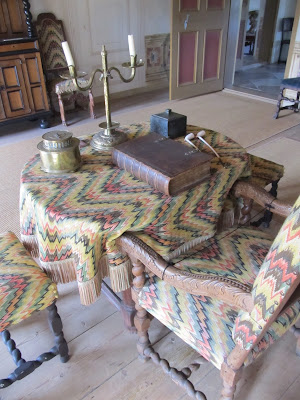I came
across this novel when Amazon offered it for free, and I didn’t
have to think twice before I downloaded it. It’s Macbeth! No,
better; it’s Lady Macbeth! It’s Scotland.
It’s the 11th century. What more can I want?
Most of us
know Macbeth from the famous tragedy by Shakespeare, but, as far as I
understand, Shakespeare more or less simply used the actual events for
inspiration rather than bothering with historical accuracy. In his
play, Lady Macbeth appears as an ambitious, ruthless woman who drives
her husband to commit regicide in order to seize the crown. In Maggie
Power’s tale, Lady Macbeth is given a chance to tell her own story:
what happened to her before she became Lady Macbeth, what made her
the kind of woman she is.
Gwaina, a
princess of Cornwall, finds herself a pawn in the power struggles of
the 11th century. To quote her:
For
my life… my death… are being cast like rune stones across the
brutal landscape of territorial treaties, royal alliances and canny
blood-ties with grasping Northmen. Already I'm learning that once
beyond the walls of childhood, having overleapt the moat of
maidenhead, a woman may count of
everything and nothing.
She is a
princess; kings and princes vie for her hand, yet she wants to rule
as a queen in her own right. Men continuously tell her to leave
politics to men:
Leave
affairs of state to men. We are your masters.
And
eventually men fail her, which leads to a bitter disappointment.
“Lady
Macbeth’s Tale” is Gwaina’s story from childhood to becoming
Lady Macbeth. That is, we do not get to see the events described by
Shakespeare in his play. There are references to that, though,
including the origin of the three witches. The first, longer part of
the story is told by Gwaina, then the point of view changes to that
of Macbeth. It is an interesting choice. On one hand, it emphasises
the change in Gwaina (later Gruoch) – after what she’s been
through, she’s hardly the same person – but on the other hand, it
distances the reader from her. Even so, it becomes clear where her
ambition and ruthlessness stem from.
My feelings
about this book are conflicted. It held my interest and I wanted
to know what happened, yet I felt like the plot didn’t ever really get
going. Perhaps too much was covered through dialogue (most often
between Gwaina and her lover(s)) instead of actually showing us what
happened. There were characters who conveniently appeared to help the
protagonist in trouble and were never seen again later, and there
were scenes that served no purpose in furthering the plot. I could
also complain about the sex scenes, many of which did not take the
story forwards, but... me? Complain about sex scenes? Not likely,
unless they’re terrible, so... no. ;)
I liked the
writing, and if you’ve been following my posts, you know this is
important to me. There were instances where it veered dangerously
close to purple prose, but for the most part, I enjoyed the style,
the beautiful sentences, and particularly a certain animistic aspect
in the style. Wonderful, and very fitting!
I won’t
go into historical accuracy in any detail since I’m no expert and
don’t know how Power created her story (I would have appreciated an
“Author’s Note” with references to sources, to which parts were
based on research and how much was the author’s imagination, but
there was none). Most of it seemed right, although there were a few
strange details, including the use of the term rapier (rapiers
did not exist in the 11th century... but then it was only
once and even then symbolically) and Gwaina being rescued from her
kidnappers by nuns in black silk attires, firing poison arrows at her
enemies. I don’t know how likely such a turn of events would have
been – sounds more like fantasy than historical fiction, although
an order of such ninja nuns would be undeniably cool!
I found it
impossible to rate this book. There was definitely a lot of promise,
but I was left with a feeling that the somewhat incoherent and loose
plot did not quite allow that potential to truly flourish.








































